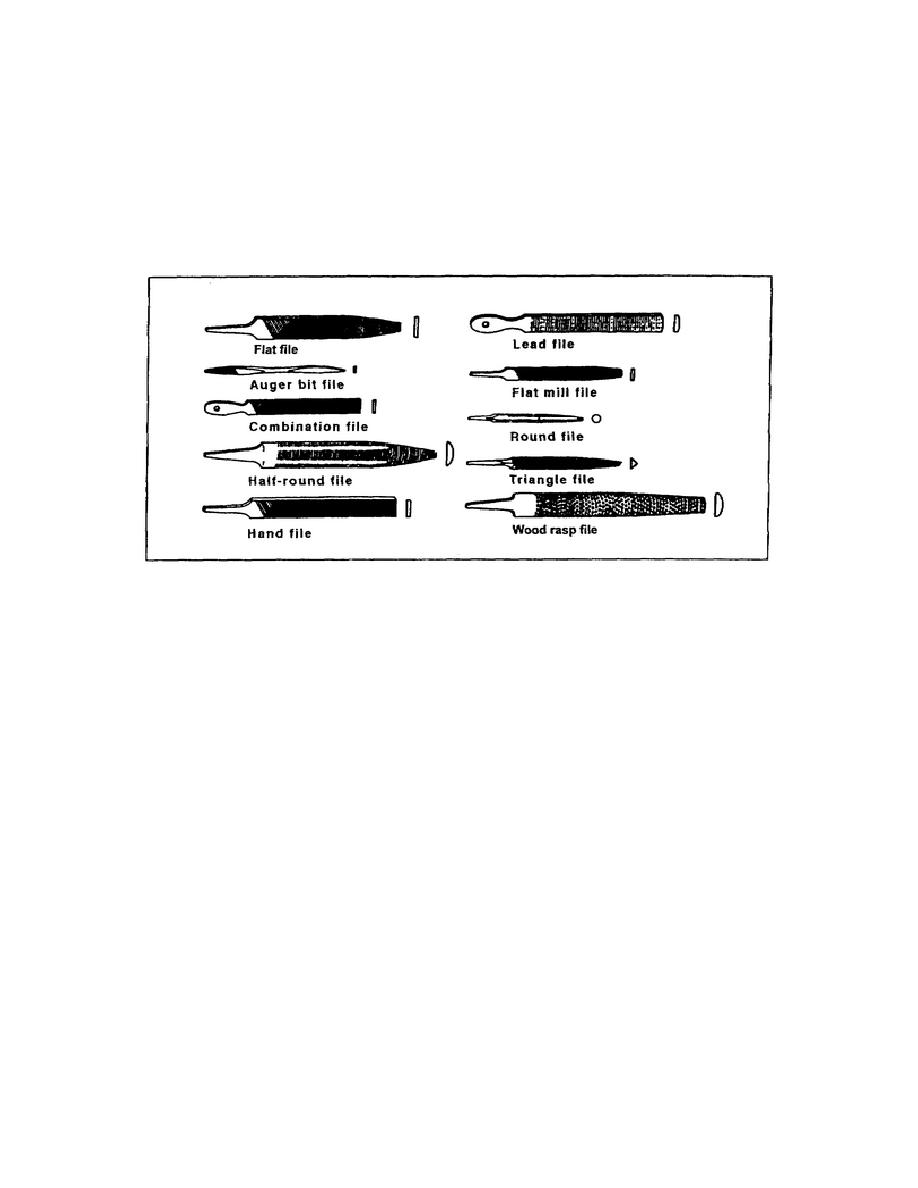
f. Files. Files are steel tools used for cutting and smoothing metal and wood. A wood rasp is a
course file that differs from the ordinary file in teeth shape and size. There are over 3,000 types and
kinds of files and rasps. The most common types are shown in Figure 3-9. Clean files with a file card,
which is a wood handle with a brush on one side and fine-wire teeth on the other. Preserve the
sharpness of files and rasps by storing them in a rack. If you need to carry files in a toolbox, wrap them
individually in cloth or paper to protect their teeth. To prevent rusting, keep files dry and do not use
rust-preventive compound on them. Files are very brittle, so do not hammer files or use them as pry
bars.
Figure 3-9. Files
g. Abrasives. There are many different abrasive types, and each type varies in grit, size, and
use. Among the abrasive types available are-
Flint is frequently used because of its low cost, but it dulls and wears quickly.
Garnet is a natural mineral, and it is the choice abrasive for hand-sanding and wood-
finishing.
Emery is a natural mineral that comes from Turkey or Greece. It is a good cutting agent,
but it abrades slowly. Emery is primarily used for metal-polishing and rust-removing.
Aluminum oxide is backed with production paper, and it is used on wood and light-
weight metal surfaces because aluminum oxide's tough coating cuts faster and longer
than flints.
Silicon carbide is produced by fusing silica and coke and it is a sharp abrasive. It is used
on lacquers, plastics, composition materials, or metals for wet and dry sanding.
EN0562
3-6


 Previous Page
Previous Page
